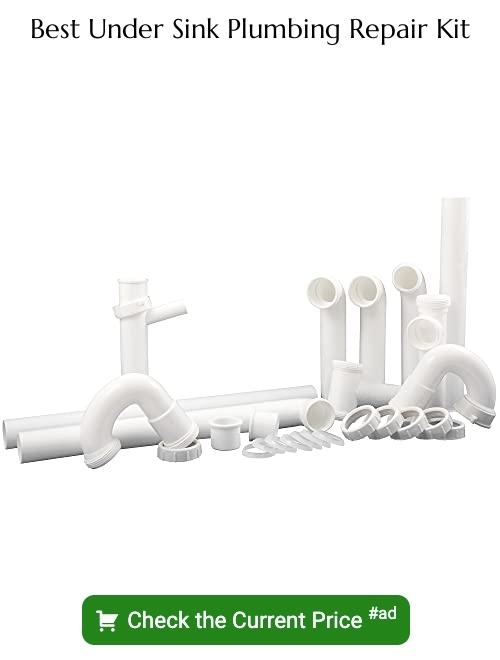Last updated on
Discover the common reasons behind a leaking kitchen sink and learn how to effectively address this issue in your home.
Have you ever noticed a pool of water under your kitchen sink? Or maybe you’ve heard a constant dripping sound that just won’t go away. If so, then it’s likely that your kitchen sink is leaking.
A leaking sink can be frustrating and even costly if left unattended for too long. But don’t worry, in this article we’ll explore the common causes of kitchen sink leaks and provide some practical solutions to help you fix the problem once and for all.
So let’s dive in!
What's Inside
Common Causes of Kitchen Sink Leaks
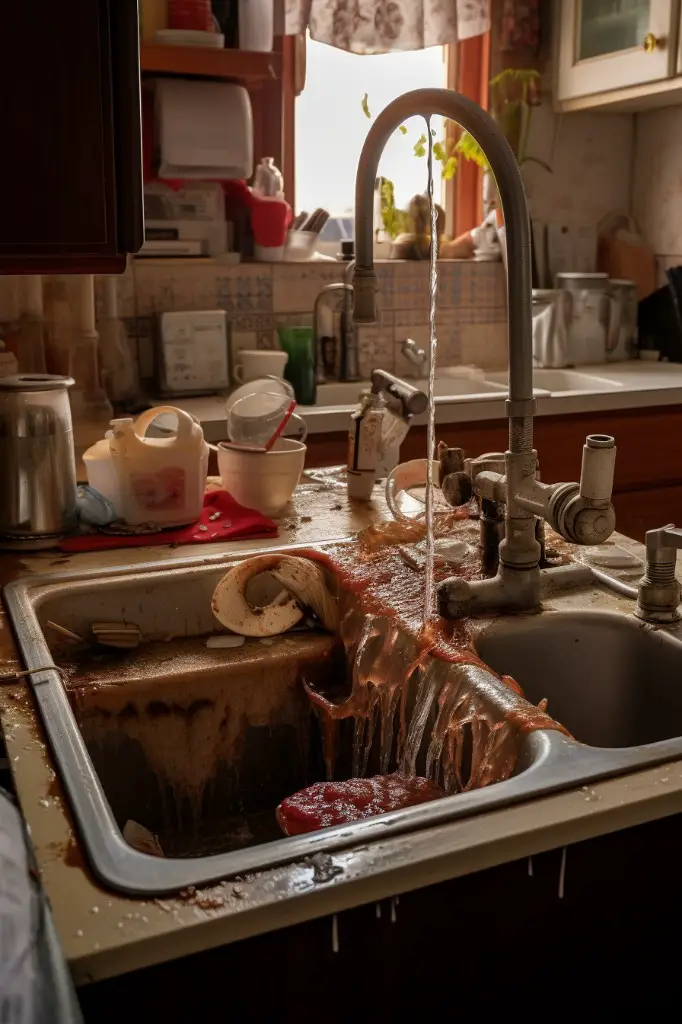
One of the most common causes of kitchen sink leaks is damaged seals and gaskets. These components are responsible for creating a watertight seal between different parts of your sink, such as the faucet and drain basket.
Over time, these seals can become worn or damaged due to regular use or exposure to harsh chemicals.
Another potential culprit behind a leaking kitchen sink is cracked or loose pipes. If you notice water pooling under your sink cabinet, it’s possible that one of the pipes has developed a crack or come loose from its connection point.
A faulty drain basket can also lead to leaks in your kitchen sink. This component sits at the bottom of your basin and helps prevent food scraps and debris from clogging up your plumbing system.
However, if this part becomes compromised due to damage or wear-and-tear over time, it may start leaking water into other areas beneath your countertop.
Damaged Seals and Gaskets
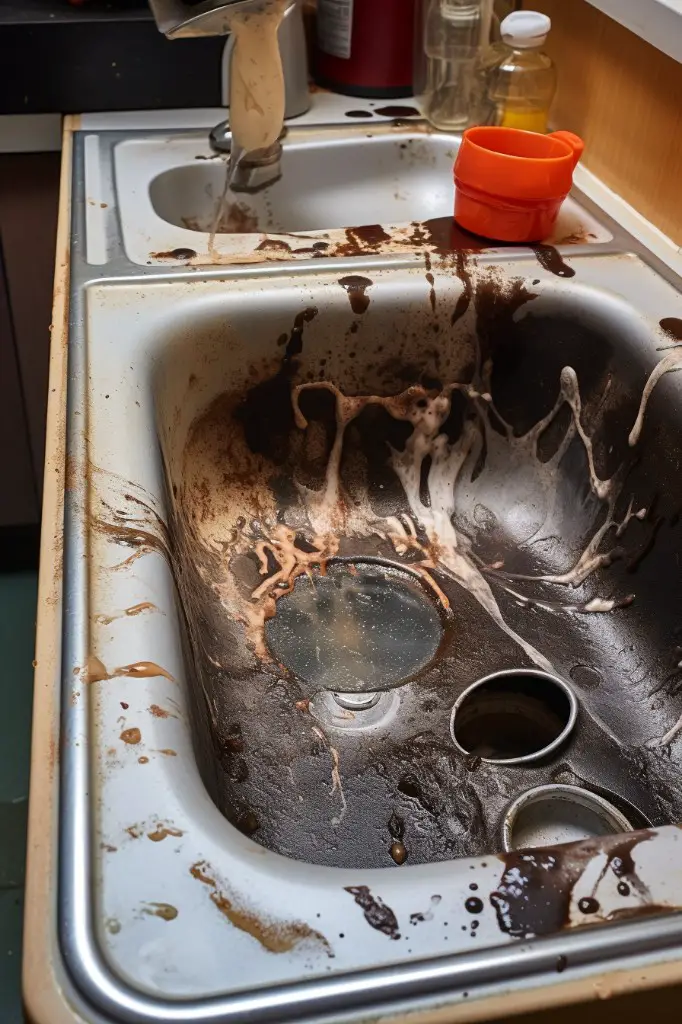
These components are responsible for creating a watertight seal between different parts of your sink, such as the faucet or drain basket. Over time, these seals can become worn out or damaged due to regular use, exposure to water and cleaning chemicals.
If you suspect that a faulty seal or gasket is causing your leaky sink, it’s important to address the issue promptly before it leads to more serious problems like mold growth or water damage. In some cases, replacing a worn-out seal may be all that’s needed to fix the problem.
To replace a faulty seal yourself:
- Turn off both hot and cold water supply valves under your sink.
- Disconnect any hoses connected from underneath.
- Remove any mounting hardware holding down faucets in place.
- Carefully lift up on each faucet handle until they come free from their base plates (if applicable).
- Use pliers if necessary when removing old washers/gaskets/seals around pipes where they meet with other plumbing fixtures/components; discard them properly after removal so no debris remains inside pipes leading into/outside home!
- Install new washers/gaskets/seals by following manufacturer instructions carefully – make sure everything fits snugly together without gaps!
Worn Gaskets or Washers
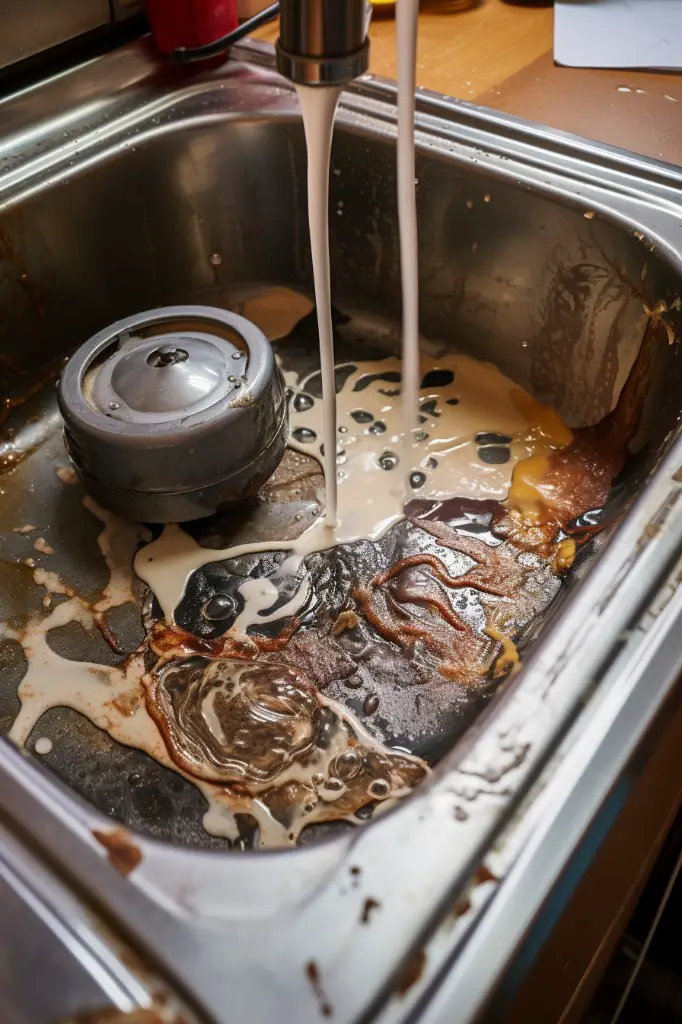
These small rubber pieces are located in the faucet and handle valves, and they help to create a tight seal that prevents water from leaking out. Over time, these gaskets can become worn down due to regular use, causing them to crack or break.
If you suspect that your sink leak is caused by worn gaskets or washers, it’s important to replace them as soon as possible. This repair requires some basic plumbing knowledge but can be done with the right tools and instructions.
To replace a washer/gasket:
- Turn off the water supply under your sink.
- Remove any decorative caps on top of your faucet handles.
- Use an adjustable wrench (or pliers if necessary), unscrew each valve stem assembly counterclockwise until it comes loose from its housing.
- Replace old washer/gasket with new ones
- Reassemble everything back together
Cracked or Loose Pipes
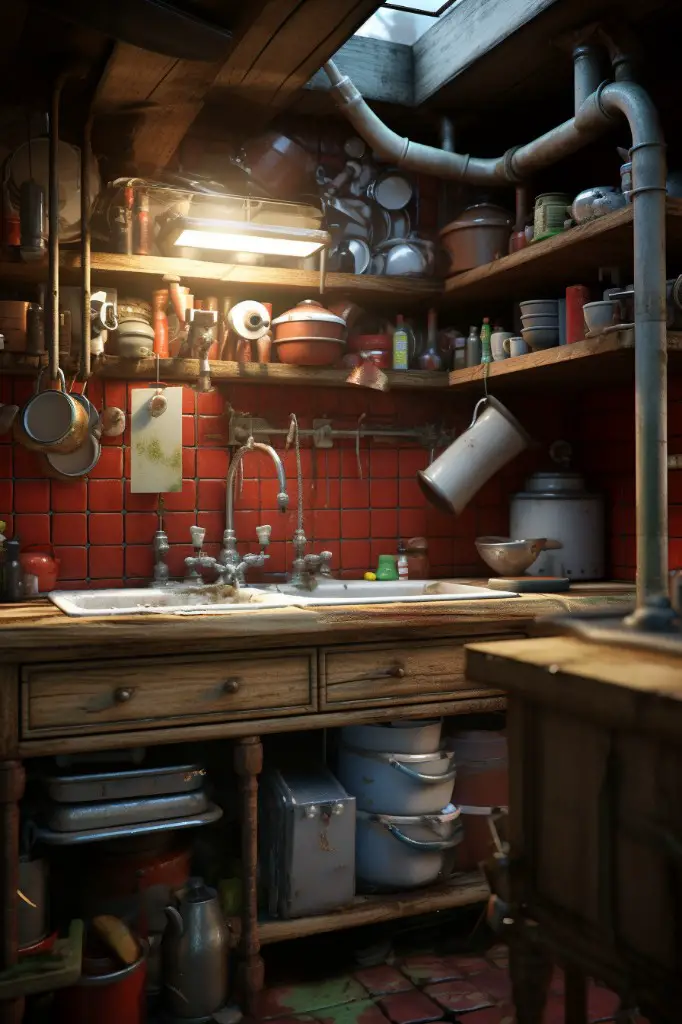
Over time, the constant use and exposure to water can cause pipes to become worn out and damaged. Cracks in the pipe can lead to leaks that may be difficult to detect at first but will eventually worsen over time.
Loose connections between pipes are also a potential source of leakage. If you notice water pooling under your sink, check for any visible signs of damage on the exposed piping beneath it.
If you suspect that your kitchen sink leak is due to cracked or loose pipes, it’s best not to attempt repairs yourself unless you have plumbing experience. Instead, call a licensed plumber who has the expertise and tools necessary for fixing this type of issue safely and effectively.
Faulty Drain Basket
The drain basket, also known as the strainer or stopper, is responsible for preventing food particles and other debris from clogging your pipes. Over time, the seal around the drain basket can become worn or damaged due to regular use and exposure to water.
If you suspect that a faulty drain basket may be causing your leaky sink, start by removing it from your sink basin. Inspect both the underside of the strainer and its surrounding area in search of any visible damage or wear.
If you notice any cracks in either component or if there are signs of corrosion on metal parts such as screws and nuts holding it together then replacing them might be necessary. Replacing a damaged strainer with a new one should solve this issue quickly without requiring professional help.
Corroded Sink Material
Over time, the metal in your sink can begin to rust and deteriorate due to exposure to water and other elements. This corrosion weakens the structure of your sink, making it more prone to leaks.
If you suspect that a corroded sink may be causing your leak, inspect the area around the drain for signs of rust or discoloration. You may also notice small holes or cracks in the surface of your sink.
To address this issue, you’ll need to replace any damaged parts with new ones made from high-quality materials that are resistant to corrosion. In some cases, it may be necessary to replace an entire section of piping if significant damage has occurred.
Preventing Corrosion.
One way you can prevent corrosion from occurring is by regularly cleaning and maintaining your kitchen sinks using non-abrasive cleaners such as baking soda or vinegar mixed with water instead of harsh chemicals like bleach which could accelerate wear on metal surfaces over time.
A Corroded Valve
Valves are responsible for controlling the flow of water in and out of your sink, and when they become corroded, they can no longer function properly. Corrosion occurs when metal comes into contact with water or air over an extended period, leading to rust formation that weakens the valve’s structure.
If you suspect a corroded valve is causing your kitchen sink leak, it’s best to call a professional plumber immediately. Attempting to fix this issue on your own could lead to further damage or even injury if not handled correctly.
A qualified plumber will be able to assess the extent of corrosion damage and recommend whether repair or replacement is necessary. In some cases where only minor corrosion has occurred, cleaning off any buildup may be enough; however, more severe cases may require complete replacement.
Remember that ignoring a leaking kitchen sink can lead to significant problems down the line such as mold growth and structural damage in your home.
A Damaged O-Ring
The O-ring is a small rubber ring that sits at the base of the faucet and helps to create a watertight seal. Over time, this ring can become brittle and crack, causing water to leak out around the base of the faucet.
If you suspect that your sink leak may be caused by an O-ring issue, it’s important to turn off your water supply before attempting any repairs. You’ll need to remove the handle from your faucet using an Allen wrench or screwdriver (depending on your model), then unscrew and remove any retaining nuts holding in place.
Once you’ve removed these components, carefully lift out the cartridge assembly (the part containing both hot and cold valves) from its housing. Inspect all parts for damage or wear – if you notice cracks in any rubber seals such as o-rings replace them immediately with new ones.
Compromised Drainpipes
Over time, the pipes that carry water away from your sink can become corroded or damaged due to exposure to chemicals and other substances. This can lead to cracks or holes in the pipes, which allows water to leak out.
If you suspect that your drainpipe may be causing a leak, it’s important not to ignore it. A leaking pipe can cause serious damage over time if left unaddressed.
To fix a leaking drainpipe, you’ll need some basic plumbing tools and materials such as plumber’s putty and PVC cement. First, turn off the water supply under your sink before removing any parts of the piping system.
Next, inspect each section of pipe for signs of damage or corrosion. If you find any issues with a particular section of piping material (such as PVC), cut out that portion using a hacksaw or reciprocating saw before replacing it with new piping material using appropriate connectors.
Damaged Faucets
Over time, faucets can become worn out or corroded, leading to leaks around the base or handles. If you notice water pooling around your faucet when it’s turned on or off, this could be a sign that there’s an issue with the fixture.
To fix a leaking faucet, start by turning off the water supply under your sink and removing any decorative caps covering the screws holding your handle in place. Use pliers to remove these screws and take off both handles before unscrewing any nuts holding down the valve stem assembly.
Once you’ve removed this assembly from its housing unit beneath your sink basin (which may require some elbow grease), inspect all parts for damage such as cracks or corrosion before replacing them if necessary with new ones from hardware stores like Home Depot®️.
Poor Sink Installation
If your sink was not installed correctly, it can lead to a variety of issues that may result in leaks. For example, if the mounting clips or brackets are not secured tightly enough, the sink may shift and create gaps between the sink and countertop.
This can allow water to seep through and cause damage over time.
If the plumber did not use enough sealant around the edges of your sink during installation or used an improper type of sealant for your particular material (such as silicone instead of plumber’s putty), this could also contribute to leaking.
If you suspect that poor installation is causing your kitchen sink leak, it’s best to call a professional plumber who can assess and correct any mistakes made during initial setup.
Leaky Garbage Disposals
Over time, the seals and gaskets in your garbage disposal can wear out or become damaged, causing water to leak from the unit. If you suspect that your garbage disposal is leaking, turn off the power supply and inspect it for any visible signs of damage.
To fix a leaky garbage disposal, start by tightening any loose connections between the unit and drainpipes. If this doesn’t solve the problem, you may need to replace worn-out seals or gaskets with new ones.
It’s important to note that attempting DIY repairs on your own can be dangerous if you’re not experienced with plumbing work. Always follow manufacturer instructions carefully when working on appliances like a garbage disposals or call in an expert plumber if needed.
Impact of Blocked Drains
When your sink’s drain becomes clogged, water can’t flow freely through the pipes and may start to back up into the sink basin. This can put pressure on the seals and gaskets around your faucet or other plumbing fixtures, causing them to wear out faster than they should.
Blocked drains also increase the risk of corrosion in your pipes as stagnant water accumulates inside them. Over time, this buildup can weaken or even crack your pipes, leading to more serious leaks that require professional attention.
To prevent blocked drains from causing kitchen sink leaks in your home, it’s important to be mindful about what you’re putting down the drain. Avoid pouring grease or oil down sinks as these substances solidify when cooled and stick onto pipe walls over time; instead dispose of them properly by letting it cool then throwing it away with regular trash collection.
Also avoid flushing non-degradable items such as paper towels or sanitary products which could accumulate within drainage systems over time leading blockages that will eventually lead to leakages if not addressed promptly.
Water Pressure and Leaks
High water pressure can put a lot of stress on your plumbing system, causing pipes to crack or joints to loosen over time. If you notice that the leak only occurs when you turn on the faucet, then it’s likely that high water pressure is the culprit.
To check if this is indeed the case, use a gauge to measure your home’s water pressure. The ideal range for residential homes should be between 40-60 psi (pounds per square inch).
Anything above this range could lead to leaks and other plumbing issues.
If high water pressure is identified as an issue in your home, consider installing a regulator valve or reducing valve in order to regulate incoming flow and prevent future damage from occurring.
Loose Water Supply Connections
Over time, the nuts and bolts that connect your sink’s water supply lines to the valves can become loose due to regular use or vibrations from nearby appliances. This can lead to a slow leak that may not be immediately noticeable but can still cause damage over time.
To fix this issue, you’ll need to tighten the connections using an adjustable wrench or pliers. Be sure not to overtighten as this could damage the fittings and make things worse.
If you’re unsure about how tight is too tight, it’s always best to call in a professional plumber who has experience working with these types of fixtures. They will have all of the necessary tools and expertise needed for fixing any type of kitchen sink leak quickly and efficiently.
Remember, if left unaddressed for too long, even small leaks like these can lead to bigger problems down the line such as mold growth or structural damage in your home.
Plumbing System Age
Over time, pipes and other components of your plumbing system can become worn out or corroded, leading to leaks and other issues. If you live in an older home with outdated plumbing, it’s important to have a professional plumber inspect your system regularly for signs of wear and tear.
In some cases, replacing old pipes or upgrading certain components may be necessary in order to prevent future leaks from occurring. While this may require an upfront investment on your part, it can ultimately save you money by preventing costly water damage repairs down the line.
If you’re unsure about the age or condition of your home’s plumbing system, don’t hesitate to reach out to a licensed plumber for assistance.
Identifying the Source of the Leak
This will help you determine what type of repair is needed and whether or not you need to call in a professional plumber.
One way to identify the source of a leak is by checking for visible signs of water damage around your sink area. Look for wet spots on your cabinets, walls, or floors near your sink.
You may also notice mold growth or musty odors if there has been standing water present for some time.
Another method involves filling up your sink with water and then releasing it all at once while observing any leaks that occur during this process. If no leaks are observed when using this method but still suspecting that there might be an issue with drainage pipes underneath, try pouring some food coloring into drainpipes before running tap water over them; if colored liquid appears anywhere outside those pipes after doing so (e.g., under cabinet), then chances are high that something needs fixing down below!
Once you have identified where the leak is coming from, take note of its severity and decide whether it requires immediate attention or can wait until later.
DIY Sink Leak Repairs
Before attempting any DIY repairs, it’s important to identify the source of the leak and determine if it’s within your skillset. Here are some common DIY sink leak repair solutions:
1. Tighten Loose Connections: Check all connections under the sink for loose nuts or bolts that may need tightening.
2. Replace Damaged Seals and Gaskets: If seals or gaskets are damaged or worn out, they will need replacing.
3. Fix Leaky Faucets: A dripping faucet is often caused by a worn-out washer which can easily be replaced with basic tools.
4. Repair Cracked Pipes: Small cracks in pipes can sometimes be repaired using epoxy putty as a temporary fix until replacement parts arrive.
5. Unclog Drains: Clogged drains cause water backup which puts pressure on pipes leading to leaks; use drain cleaners or plungers to unclog them.
Sink Leak Prevention Tips
Here are some tips to help you prevent future leaks in your kitchen sink:
1. Regularly inspect the pipes under your sink for any signs of damage or wear.
2. Avoid using harsh chemicals that can corrode the pipes and cause them to leak.
3. Be careful not to over-tighten plumbing connections as this can cause damage and lead to leaks.
4. Don’t pour grease or oil down the drain as it can solidify in the pipes, causing blockages that may result in a leak.
5. Use a strainer over your drain opening when washing dishes or preparing food, which will catch any debris before it goes down into your plumbing system.
When to Call a Plumber
While some leaks can be easily fixed with DIY solutions, others require professional expertise and equipment. Here are some signs that indicate it’s time to call in a plumbing professional:
- The leak is severe or has caused significant damage
- You’re unable to locate the source of the leak
- Your attempts at fixing the issue have been unsuccessful
- You don’t have experience working with plumbing systems
A licensed plumber will not only identify and repair any leaks but also ensure that your entire plumbing system is functioning properly. They’ll use specialized tools and techniques such as video inspections or hydro jetting if necessary.
Remember, ignoring a leaking sink can lead to more serious problems down the line such as mold growth or water damage.
Selecting a Plumbing Professional
In such cases, you may need to call in a plumbing professional. But how do you select the right plumber for your needs? Here are some tips:
1. Look for licensed and insured plumbers: A reputable plumber should have proper licensing and insurance coverage.
2. Check their experience: Find out how long they’ve been in business and if they specialize in kitchen sink leak repairs.
3. Read reviews: Check online reviews from previous customers to get an idea of their work quality.
4. Get multiple quotes: Don’t settle on the first quote you receive; compare prices from different plumbers before making a decision.
5. Ask about warranties or guarantees: Make sure that any work done by the plumber is backed up with warranties or guarantees so that you’re covered if anything goes wrong after completion of repair works.
By following these tips, selecting a reliable plumbing professional will become easier than ever before!
FAQ
What causes kitchen sink to leak underneath?
A kitchen sink may leak underneath due to shifting plumbing lines, worn-out connections, or pipe corrosion causing fractures in the plumbing lines beneath the sink, resulting in water leaking out.
What are common reasons sinks leak?
Common reasons for sink leaks include clogged water supply lines, faulty p-traps, and poor sink drain pipe connections.
How do I stop my sink from leaking underneath?
To stop your sink from leaking underneath, check for leaks around the slip nuts after running water through the drain, and if needed, replace the washers, trap bend, or trap arm if damaged or corroded.
What are the steps to identify the source of a kitchen sink leak?
To identify the source of a kitchen sink leak, inspect the faucet, pipes, drain, garbage disposal, and connections, searching for signs of water damage or dripping.
How often should I check for leaks in and around my kitchen sink to prevent damage?
To prevent damage, you should check for leaks in and around your kitchen sink at least once every three months.
Which professional services can I consult for fixing a persistent kitchen sink leak?
Professional services you can consult for fixing a persistent kitchen sink leak include plumbers or plumbing companies.
